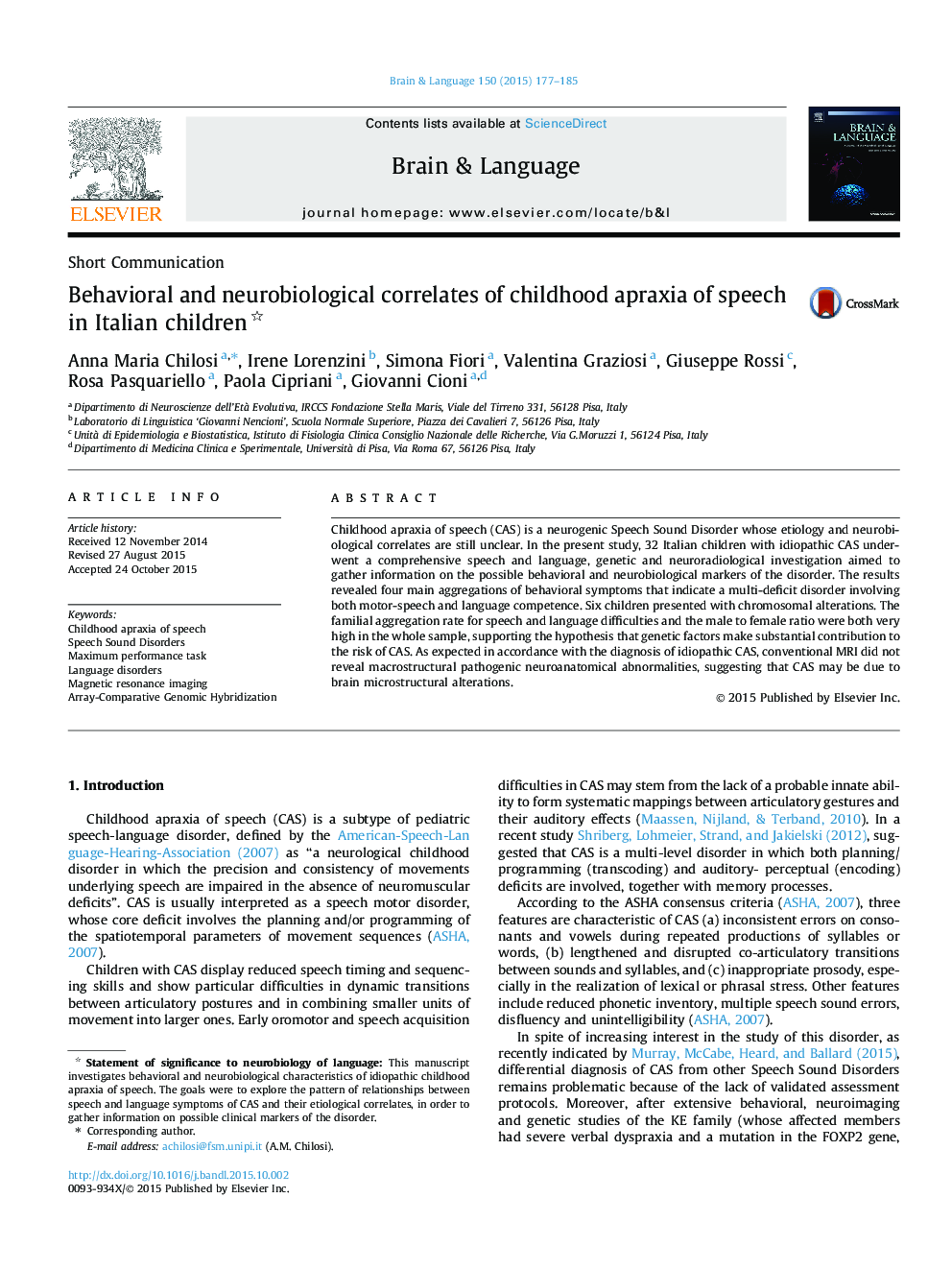| Article ID | Journal | Published Year | Pages | File Type |
|---|---|---|---|---|
| 7284061 | Brain and Language | 2015 | 9 Pages |
Abstract
Childhood apraxia of speech (CAS) is a neurogenic Speech Sound Disorder whose etiology and neurobiological correlates are still unclear. In the present study, 32 Italian children with idiopathic CAS underwent a comprehensive speech and language, genetic and neuroradiological investigation aimed to gather information on the possible behavioral and neurobiological markers of the disorder. The results revealed four main aggregations of behavioral symptoms that indicate a multi-deficit disorder involving both motor-speech and language competence. Six children presented with chromosomal alterations. The familial aggregation rate for speech and language difficulties and the male to female ratio were both very high in the whole sample, supporting the hypothesis that genetic factors make substantial contribution to the risk of CAS. As expected in accordance with the diagnosis of idiopathic CAS, conventional MRI did not reveal macrostructural pathogenic neuroanatomical abnormalities, suggesting that CAS may be due to brain microstructural alterations.
Keywords
Related Topics
Life Sciences
Neuroscience
Biological Psychiatry
Authors
Anna Maria Chilosi, Irene Lorenzini, Simona Fiori, Valentina Graziosi, Giuseppe Rossi, Rosa Pasquariello, Paola Cipriani, Giovanni Cioni,
